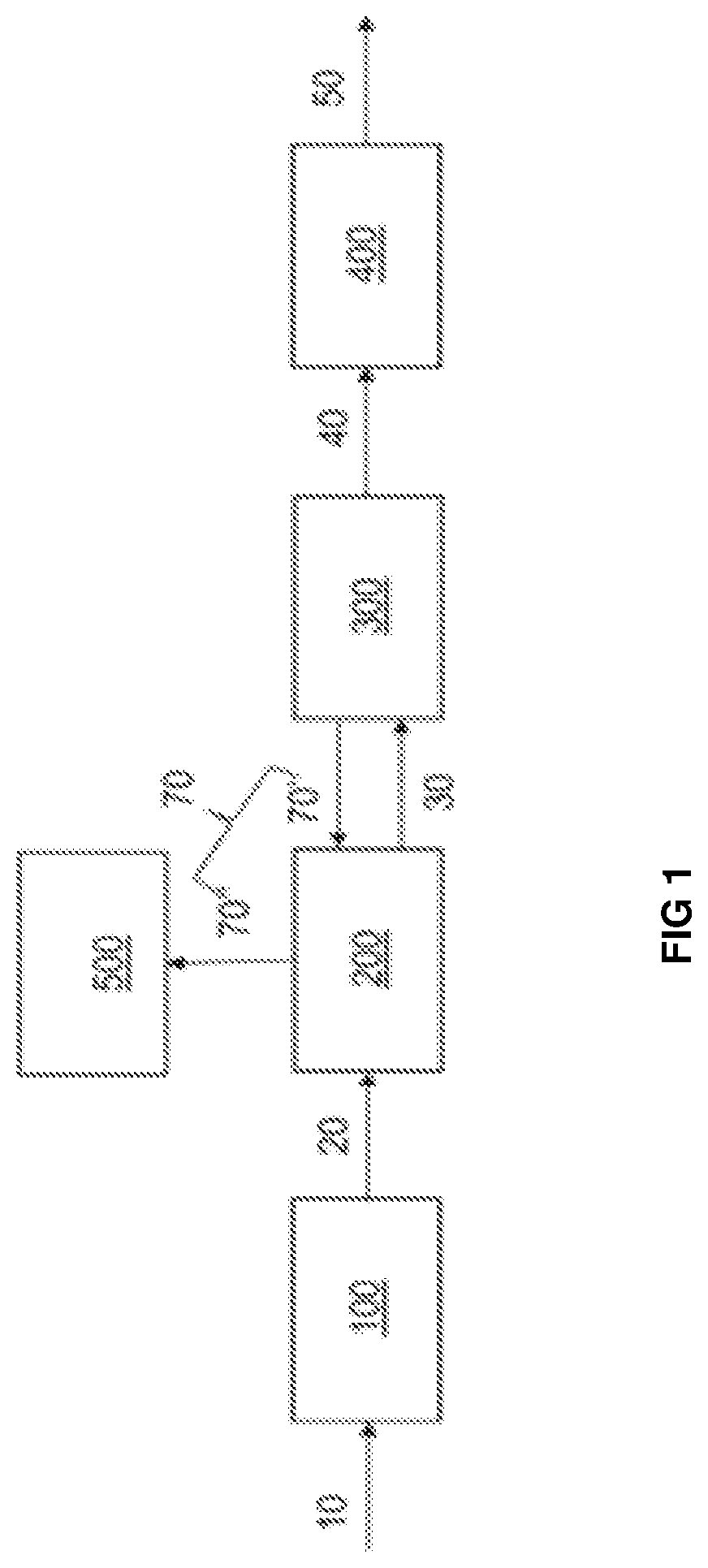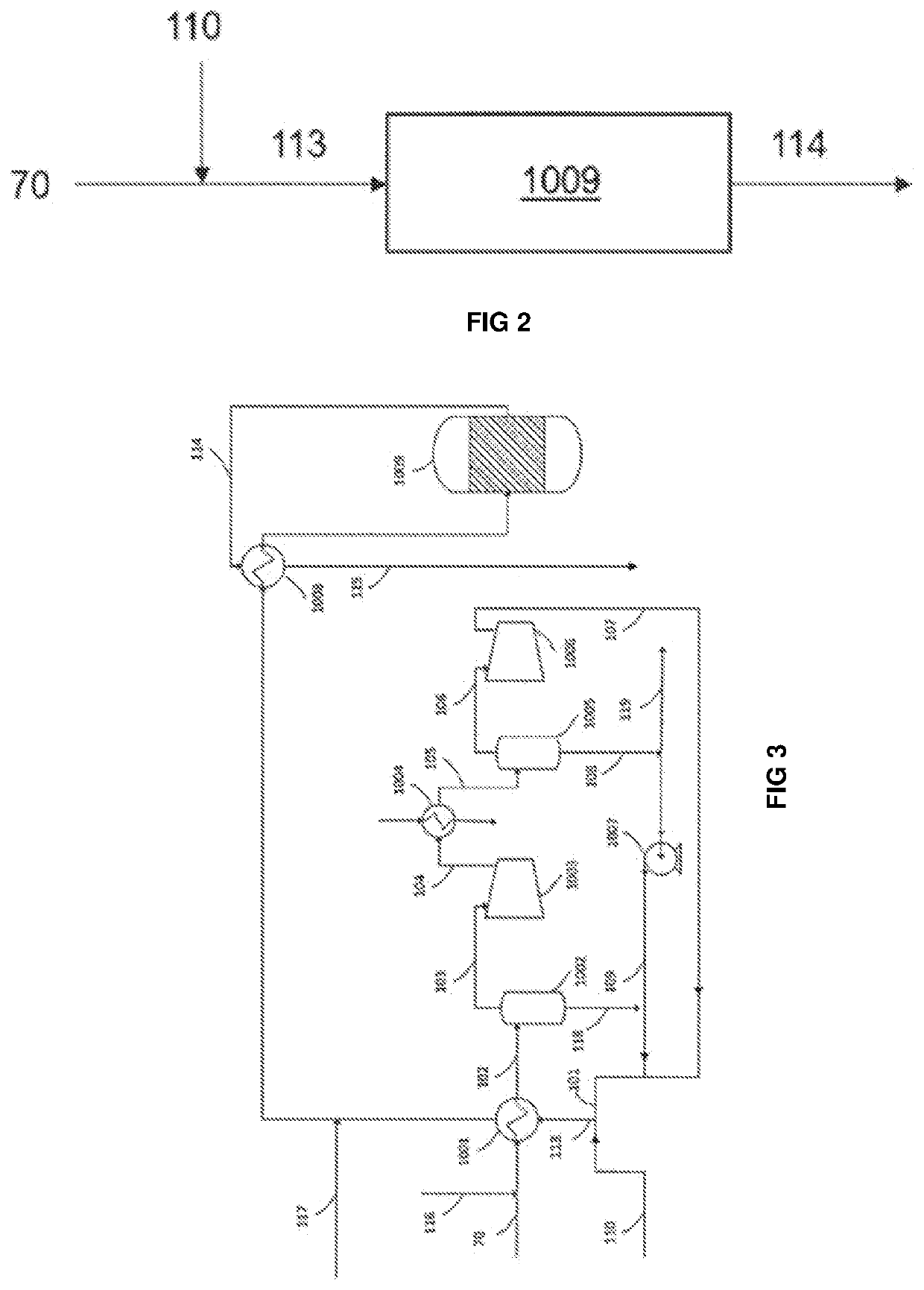Method for the production of a syngas from a stream of light hydrocarbons and from combustion fumes from a cement clinker production unit
a technology of light hydrocarbons and combustion fumes, which is applied in cement production, clinker production, manufacturing tools, etc., can solve the problems of not being very high, not satisfactory hsub>2/sub>/co ratio of syngas produced during dry reforming or steam methane reforming, and not satisfying,
- Summary
- Abstract
- Description
- Claims
- Application Information
AI Technical Summary
Benefits of technology
Problems solved by technology
Method used
Image
Examples
example 1
Conversion of a Cement Works Effluent into a Gas Composition Comprising Carbon Monoxide and Dihydrogen (in Accordance with the Invention)
[0112]The combustion flue gases from the clinker production are collected at the level of the multi-cyclone preheater of the clinker production unit, upstream of the chimney for discharging the combustion flue gases. The combustion flue gases collected comprise 25% by volume of CO2, 12.5% by volume of H2O, 3% by volume of O2 and 59% by volume of N2. The temperature of the combustion flue gases collected is 450° C. Provisions of steam and of oxygen (by adding atmospheric air), and also a flow of natural gas, are added to these combustion flue gases in order to obtain the following volume ratios:
N2 / HC=1.05;
H2O / HC=0.33;
CO2 / HC=0.25;
O2 / HC=0.15.
[0113]The reaction stream is brought to 850° C. under a pressure of 0.25 MPa (2.5 bar), in the presence of a nickel-based catalyst (HiFUEL R110, Johnson Matthey Plc, Alfa Aesar). The hourly space velocity of the r...
example 2
Conversion of a Cement Works Effluent into a Gas Composition Comprising Carbon Monoxide and Dihydrogen (in Accordance with the Invention)
[0117]The combustion flue gases from the clinker production are collected at the level of the multi-cyclone preheater of the clinker production unit, upstream of the chimney for discharging the combustion flue gases. The combustion flue gases collected comprise 25% by volume of CO2, 12.5% by volume of H2O, 3% by volume of O2 and 59% by volume of N2. The temperature of the combustion flue gases collected is 450° C. Provisions of steam and of oxygen (by adding atmospheric air), and also a flow of natural gas, are added to these combustion flue gases in order to obtain the following volume ratios:
N2 / HC=0.98;
H2O / HC=0.66;
CO2 / HC=0.32;
O2 / HC=0.10.
[0118]The reaction stream is brought to 850° C. under a pressure of 0.25 MPa (2.5 bar), in the presence of a nickel-based catalyst (HiFUEL® R110, Johnson Matthey Plc, Alfa Aesar). The hourly space velocity of the ...
PUM
| Property | Measurement | Unit |
|---|---|---|
| pressure | aaaaa | aaaaa |
| pressure | aaaaa | aaaaa |
| temperature | aaaaa | aaaaa |
Abstract
Description
Claims
Application Information
 Login to View More
Login to View More - R&D Engineer
- R&D Manager
- IP Professional
- Industry Leading Data Capabilities
- Powerful AI technology
- Patent DNA Extraction
Browse by: Latest US Patents, China's latest patents, Technical Efficacy Thesaurus, Application Domain, Technology Topic, Popular Technical Reports.
© 2024 PatSnap. All rights reserved.Legal|Privacy policy|Modern Slavery Act Transparency Statement|Sitemap|About US| Contact US: help@patsnap.com









